
CUV-Commodity Utility Vehicle
Ford no longer sells small cars in the United States. Their sedan lineup is gone, replaced by a growing number of crossovers, some more carlike than others, with the Escape standing out as a direct replacement for a compact or midsize sedan. However, at the smaller end, Ford's product line is rounded out by the subcompact EcoSport. A product of the Brazilian love for compact SUVs, it echoes early CR-V and RAV4 models, with its side swinging tailgate, tall stance, and quirky, cutesy styling. While the majority of subcompact CUVs now sold in the US stylistically echo hatchbacks, the EcoSport seems to delight in being a truck.
It should be mentioned that the EcoSport has no shortage of competitors in the United States, as the subcompact CUV market is enormous. There are at least 19 different models sold in the United States, including the EcoSport. By the numbers this score of models has an average power output of 175 horsepower, an average curb weight of 3300 pounds, an average maximum cargo volume of 45 cubic feet, and a fuel economy of about 29.5 miles per gallon. It should be mentioned that the standard deviation of these values is not very great, being 56.7 horsepower, 278 pounds, 9.7 cubic feet, and 3.9 MPG respectively. By the numbers, these models don't vary too much. What does this mean? It means that the subcompact crossover, because of the astronomical demand for such vehicles, has become commoditized. This is not a new fact for the modern consumer; consumer electronics, like cell phones, DVD players, televisions, and laptops have also achieved effective cost and performance parity between all competing manufacturers. As soon as one selects the level of performance they desire from a smartphone, or a laptop, or a winter coat or a subcompact crossover, one's options become effectively identical, with little meaningful variation in capability or style except for branding and its effects. Is this the end state of all free market competition? The commoditization of all consumer items? With the growth of "fast fashion" and streaming-based media, this may be more likely than not. In one sentence, Karl Marx lays this bare in Wage Labour and Capital:
"No matter how powerful the means of production which a capitalist may bring into the field, competition will make their adoption general; and from the moment that they have been generally adopted, the sole result of the greater productiveness of his capital will be that he must furnish at the same price, 10, 20, 100 times as much as before.
Marx points out quite rightly that competition in capitalism is instantly responsive to any advances in "competitiveness" that any given actor may make. Such is the case with the advent of smartphones, or ultrabook-style convertible laptops, or small, fuel-sipping crossovers, or cheap clothes made possible by sweatshops in the Global South. Is such an arrangement unjust? Perhaps. However, the consumer can only be so concerned with the fairness of their position, because in the world of the 21st Century, cheap clothes, laptops, smartphones, and cars are all materially necessary for the average person. As soon as our society adopted the Web 2.0 ubiquity of internet services, as soon as it turned car culture into transportation policy, as soon as it moved commerce, politics, and education online, it made these things necessary to have for one to even exist. The consumer no longer has a choice whether to buy a laptop, or a smartphone, or a car. That agency has been removed from them by the material facts of the world they live in. The choice that remains with them is which laptop, which car, which video streaming service to buy, not whether to buy any of these in the first place. So what meaningful agency does this embattled consumer possess, then?
The consumer's only meaningful scrap of agency is the choice of brand. What names, what brand identities, will we associate ourselves with? It seems universal knowledge now in the First World that brand choice is agency, is an active decision by the consumer. Which brands are deserving of our praise, which brands warrant a boycott? When selecting a subcompact crossover, the buyer's seemingly first choice is which brand to pick. In this regard, the EcoSport's first and foremost tool for selling itself is to embody the Ford product identity. We saw this with the Jeep Cherokee, whose user experience seemed to be designed firstly around reassuring the driver that they are in a Jeep. So, then! If one buys an EcoSport because they have selected the Ford brand, because they have allied themselves with that image, now wearing their car as a part of their fashion, what have they bought into?


What does the EcoSport sell?
In terms of overall user experience, the EcoSport is broadly comparable to its competitors. It features a maximum cargo volume of 50 cubic feet, in the 68th percentile for subcompact crossovers, and this cabin volume shows even up front. Headroom is very generous, and quite a lot of space is available for the driver up front. However, this surprisingly doesn't compromise rear seat room too much, and even with a 6 foot tall driver, there is still acceptable, if not ample, legroom in the rear seat. The only real compromise seems to be the trunk space, constrained by the short, tall shape of the EcoSport. With the boxy profile, there is plenty of volume available, but for simply hauling groceries or baggage, the trunk isn't terribly useful unless cargo is stacked vertically. In a callback to old RAV4s and South American-market small SUVs, the rear hatch swings sideways, though in 2019 it no longer mounts a full size external spare. This unfortunately means that the EcoSport does not mount a spare at all. However, the side swinging rear hatch makes loading easy and allows for a very large rear door area, nearly the entire cross section of the cabin. In terms of practicality, the EcoSport truly does feel more like a mini truck than a hatchback.
Up front, the driver is presented with a suitably modern experience. The infotainment system has a large screen, responsive software, and should be easy enough for the average person to use, and the HVAC interface as well as smartphone support are both class-competitive. However, outside of electronics, the EcoSport shows where Ford compromised. Because of the tall, spacious cabin, the windows are correspondingly large, but the beltline sill is still high relative to the driver; combined with the tall stance of the car, this means that the driver has very limited downwards and lateral visibility, but is quite exposed to sunlight. Combined with the thick pillars (including the A pillars, which are very visually obtrusive), the driver's all-around visibility is compromised, and blind spot warning feels like a necessity, not a luxury.Rearwards visibility is similarly compromised, though the back up camera helps.


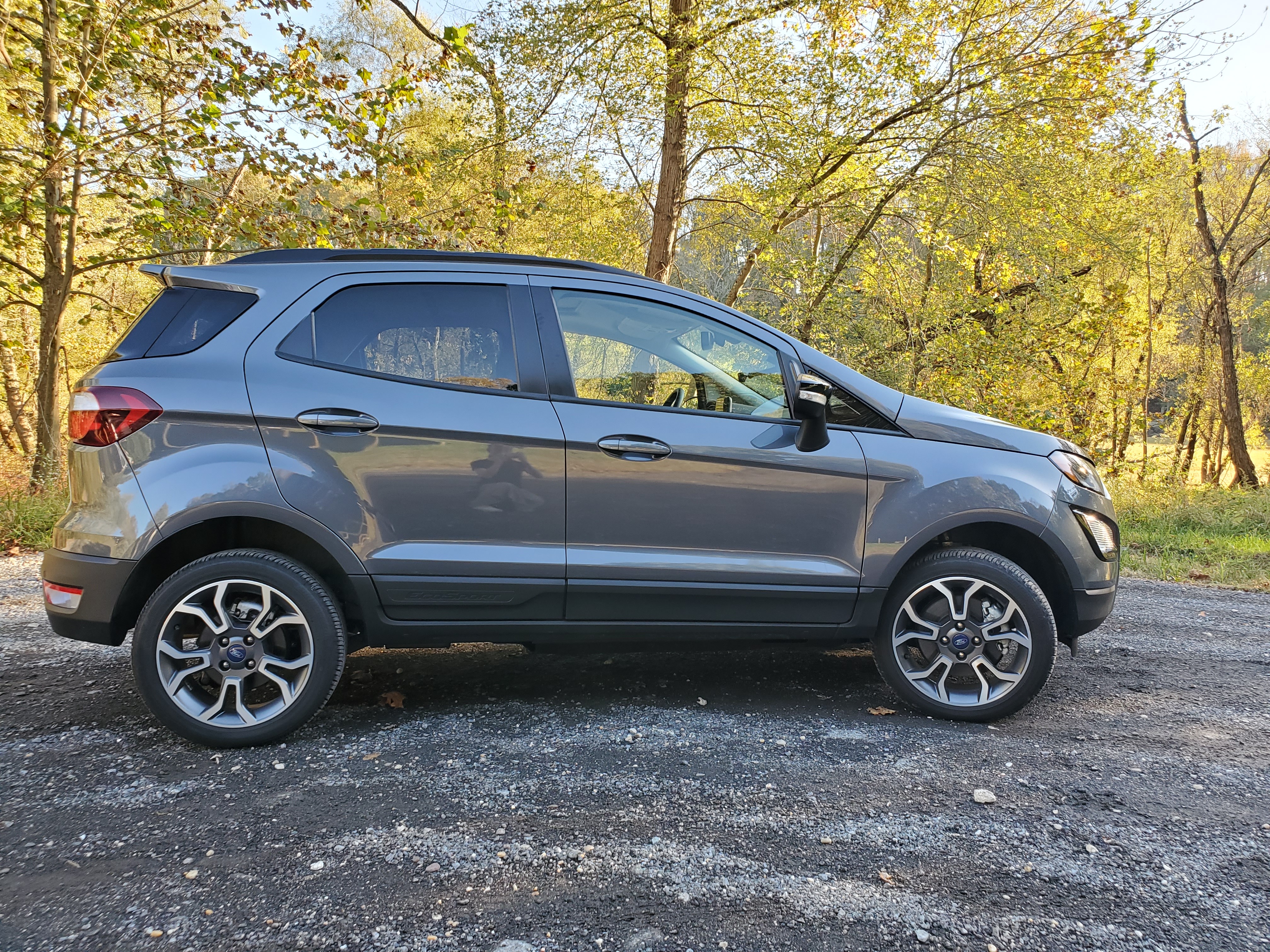
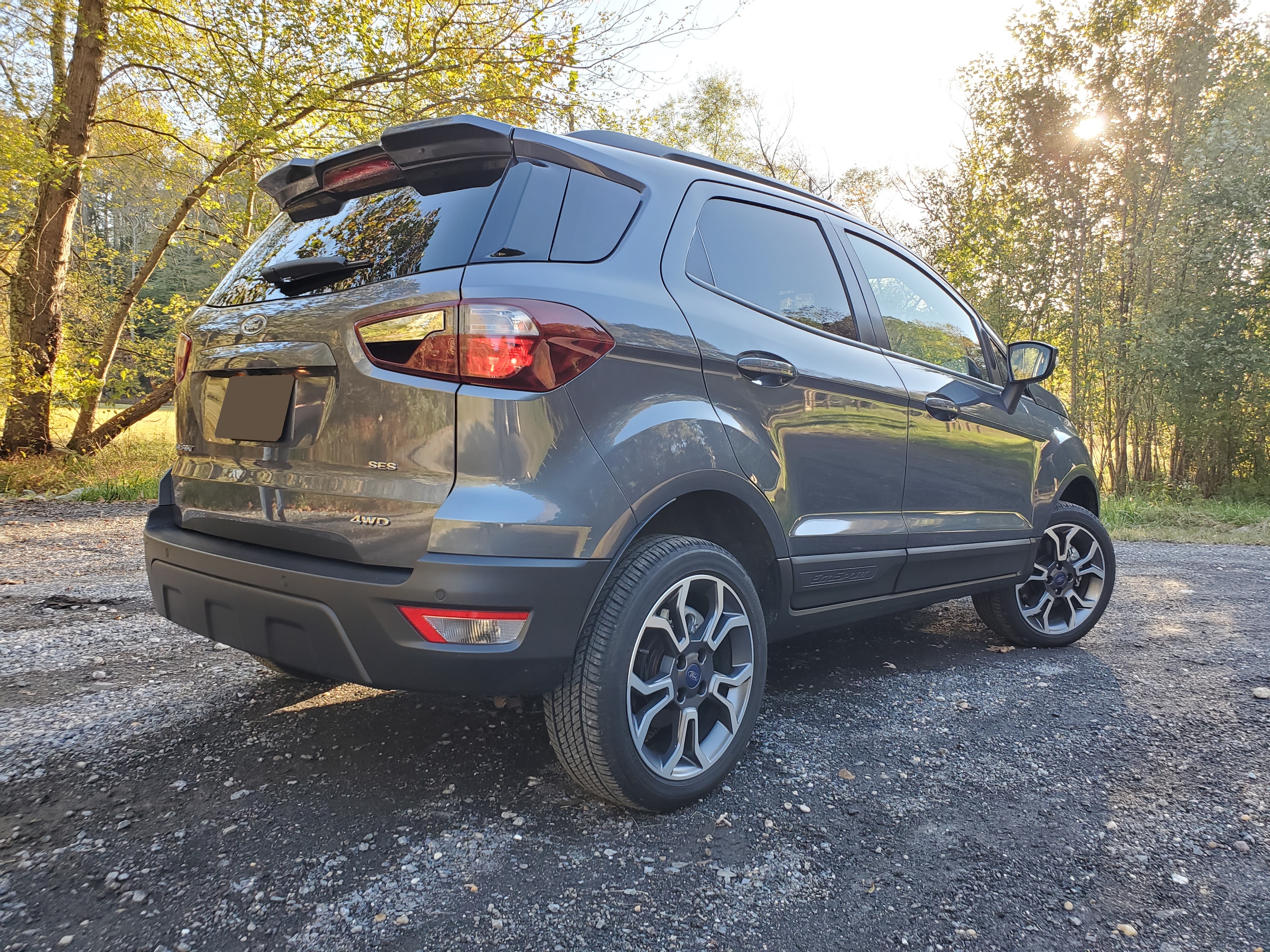

Outside of the visibility problem, the EcoSport is easy enough to drive. This particular EcoSport had the SES trim, which rides on what Ford calls a "sport-tuned" suspension. Combined with all wheel drive and the 2.0 liter "Duratec" engine, which produces 166 horsepower and 149 pound-feet of torque, this certainly sounds sporty. Though the enthusiast scoffs, rightly noting that there is little a car manufacturer can do to turn a subcompact family crossover into a cornering monster, the SES EcoSport is something of a surprise. Ford really shows their chassis design chops with the SES trim, and it is clear that even though they have abandoned sport compacts, their skill remains, should they ever return. The steering is quite heavy for a family car, though it is responsive. The suspension itself gives the EcoSport a very firm ride, and while it is very communicative for the driver, passengers will only notice substantial road noise and sub-optimal ride harshness, though wind noise and vibration mitigation are very good in the cabin. With this suspension tune, the EcoSport turns in to corners eagerly and keeps composed even with hard turns, though body roll is excessive and steering effort during corners is higher than one might expect. The tires are grippy and the driver isn't afraid of twisty roads, unlike with the Jeep Cherokee. While the EcoSport is not a sport compact by any stretch of the imagination, it is a car that one can have fun with, and it feels happy with twisty country roads. Additionally, its turning circle is excellent, and parking in cities should be a breeze.
The 2.0 four cylinder turns a six speed automatic gearbox, and the combination does an acceptable job of hustling the EcoSport along. Acceleration is not thrilling, but feels slightly above economy car territory. The transmission's shifts are generally smooth but slow, even in the manumatic mode (which is controlled with an appalling little rocker switch on the side of the shifter), and it nets the EcoSport SES 25 miles per gallon combined. The engine is rather loud at all times, and sounds less thrilling than buzzy. Overall, the powertrain of the EcoSport is perfectly fine for an on-road crossover with vague sporting aspirations. However, it lacks polish and feels more 2010 than 2020. On loose surfaces, the all wheel drive system puts down power excellently, and wheelspin is difficult to achieve. On gravel and dirt, the EcoSport should acquit itself well, though the tires are too low profile to handle true off roading. The EcoSport betrays its potential off of pavement with the distinct absence of any kind of hill descent control, however. The inclusion of such a feature would lend a little more practicality to the EcoSport and make it feel less like an economy car, but it appears that Ford knows what it sells for. If you want competent offroad capability, you can do worse than the EcoSport, but you can also do much better.
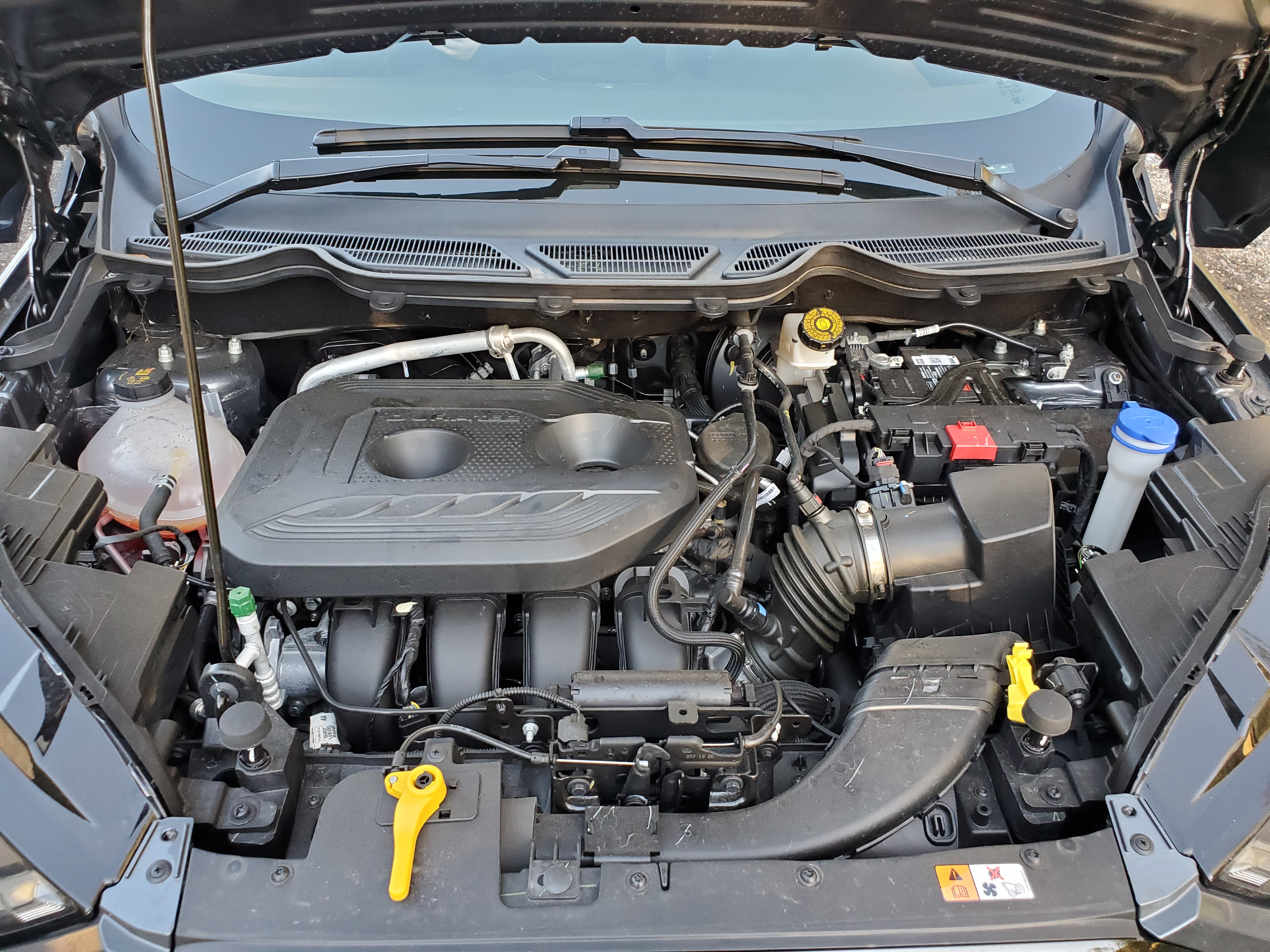

So let's bring it all together. The EcoSport SES has a ride that has clearly been carefully designed, and on a smaller, lower car, it might be considered sporty. Instead, it inhabits the no man's land between mundane and quirky. The powertrain is nothing special, and returns below average fuel economy (even at its best, the EcoSport is only in the 21st percentile for gas mileage). The cabin is spacious for either people or cargo, but not both, and passenger amenities are class-competitive, neither luxurious nor skimpy. The EcoSport is a car that achieves better practicality than many of its competitors, and offers a modicum of driving pleasure, at the cost of fuel economy and everyday usability. The EcoSport sells the ideal of a daily-able truck, a vehicle that gives its driver the best of both worlds, that allows its driver to be both rugged and urbane, both the hard-working blue collar type and the suburban white-collar consumer as well. To truly buy into the EcoSport's thesis, one must neglect that it is Ford's replacement for their Focus and Fiesta, neglect the compromises it has made in comparison to them. The EcoSport sells itself as the perfect companion to a suburban lifestyle, with just enough utility, just enough "truck-ishness" to not be a city car, but just enough practicality and everyday comfort to take to the store. Does this hold true, in reality? On a superficial level, perhaps. Unfortunately, the EcoSport's compromises lay themselves bare under critical analysis: This car is harder to drive than a standard sedan or hatchback, and gets far worse fuel economy for comparable performance, and it compromises its visibility and ride comfort in order to adopt its sporting affectations. However, its small, garage-friendly size, as well as limited suite of truly off-road oriented features like hill descent control or large tires, compromise the EcoSport's ability to inhabit the role of "mini truck." Here we have a car trapped in between automotive genres by its own engineering. Perhaps by optimizing for one or the other of the EcoSport's identities, we could find truly outstanding cars, and in the past, this was true: The Focus was a very competitive compact for the entire time it was produced, and the Courier compact pickup has proven itself for years in overseas markets. Perhaps Ford's upcoming compact pickup will do what the EcoSport could not, freeing the subcompact CUV from the role it has been forced into.
What does this mean for the consumer?
Foremost, the consumer should keep in mind that this is a commoditized market: Thusly, their only truly rational action is to purchase the cheapest one available. No matter their choice, the consumer's vehicle will eventually end up making between about 120 and and 180 horsepower, will return around 27-33 miles per gallon, and will have about 30-50 cubic feet of cargo space with the rear seats down. Any of these parameters can of course be optimized for to some degree, and the consumer will see a commensurate increase in MSRP, but for the average driver, who needs a car to comfortably carry four people and their bags, is any optimization truly necessary? Besides, if the consumer acts as though they are purchasing a commodity, which they are, then their choices are simple: The Nissan Kicks, Hyundai Venue, and Chevrolet Trailblazer are the cheapest subcompact CUVs on the market, all with MSRPs around 19,000 USD. It should be mentioned that the subcompact Nissan Versa has 95% of the Kicks' passenger volume, and costs over three thousand dollars less than the Kicks.
So the rational consumer will accept that subcompact crossovers are a commodity, and will pick the cheapest out of their twenty different options (the Hyundai Venue). The consumer's choice will give them a spacious cabin and 33 MPG combined, much better than the EcoSport's maximum EPA-rated combined fuel economy of 28 MPG. To be fair to the EcoSport, however, it boasts substantially more cargo volume than the cheapest of its competitors, and it in fact is one of the absolute best subcompact crossovers by cubic-feet-of-cargo-space-per-dollar, perhaps the most situationally-specific metric ever applied to a consumer car. Want consumer advice? Here it is, so pay attention: If you want a small crossover, and you specifically want to avoid sedans, get a Hyundai Venue. If you want to get a small crossover and have all your friends titter in amusement when they first see it, get a Nissan Kicks and use Nissan's "Color Studio" to personalize it. if you want to haul as much stuff as you possibly can, with the smallest car you can do it with, then, and only then, should you get an EcoSport.




But consumers aren't rational, not about cars. As we have shown time and again, cars are not merely consumer products, but they are lenses through which we view the world, ourselves, and one another, and they are also fashion items, there mere act of selecting and purchasing a car having become a decision with social ramifications. So maybe you don't want merely the cheapest crossover you can find. Maybe you want the car that makes you happy, or safe, or the car that makes you look like you care about something. All of these things bring even subcompact crossovers out of the realm of mere commodities, at least just a little bit. Therefore, it's a bit presumptuous of any automotive writer, let alone myself, to tell you what you should buy. We can't tell you what makes you happy, and at the end of the day, you are the person your car speaks to the most. But we must tread carefully here, especially when discussing highly competitive commodity products. We have to remember that at the end of the day, these are products designed to be sold, particularly in segments as competitive as the subcompact crossover field. Yes, these cars impart meaning, and they have textual messaging that sets them apart from one another, but we must always keep in mind there is a reason they all get the same fuel economy, make the same power, hold the same amount of stuff. Sure, get the car that makes you happy, but ask yourself why it makes you happy. Ask yourself what truly sets it apart from the others, and ask yourself what you would lose from pretending to be a rational buyer and simply purchasing the cheapest model you can find. After all, the way we consume media isn't free from critique, and that extends to how we consume cars.
Perhaps the Ford Ecosport is a car designed to be consumed without that critique, where its appeal remains so long as one doesn't explore how exactly it compares to its competitors. Or maybe we should look at what the EcoSport excels at: It is a small, maneuverable truck-like crossover with a middling blend of utility and everyday practicality. The EcoSport feels a little old-fashioned in that regard, echoing the compact SUVs of the 1990s, back when they really were SUVs and not tall yet car-like crossovers. Perhaps then the Ford EcoSport is one of the final remnants of the origins of modern crossovers, a blend of car and SUV that does it so well, yet doesn't measure up nicely to its competitors, the new breed of crossover, designed for the American consumer of today. Perhaps the difference between the EcoSport and the Kicks is a literalist/spiritualist dichotomy, where the EcoSport sticks by the simple technical definitions outlining what crossovers are, while the Kicks merely retains the barest hint of its origins, instead presenting itself as a taller, more athletic and utilitarian hatchback, yet not so truck-like as to compromise its nature as a family car.
So that's what it comes down to. What the EcoSport is selling is in fact a somewhat archaic use of the car genre known as "crossovers," one that focuses more heavily on its SUV identity. The EcoSport is for people who truly do want an SUV, not a crossover. They want the side swinging tailgate, and the tall, boxy body and all wheel drive, and they don't care about fuel economy or visibility. With the Ford EcoSport, they can have their cake and eat it too: They get all they want, but in a small, sensible car, one that still gets decent fuel economy, one that can park in the city, one that handles itself nearly as well as a car does. Do you miss the '90s CR-V? Do you want that experience, but updated for the 21st century? Get an EcoSport.
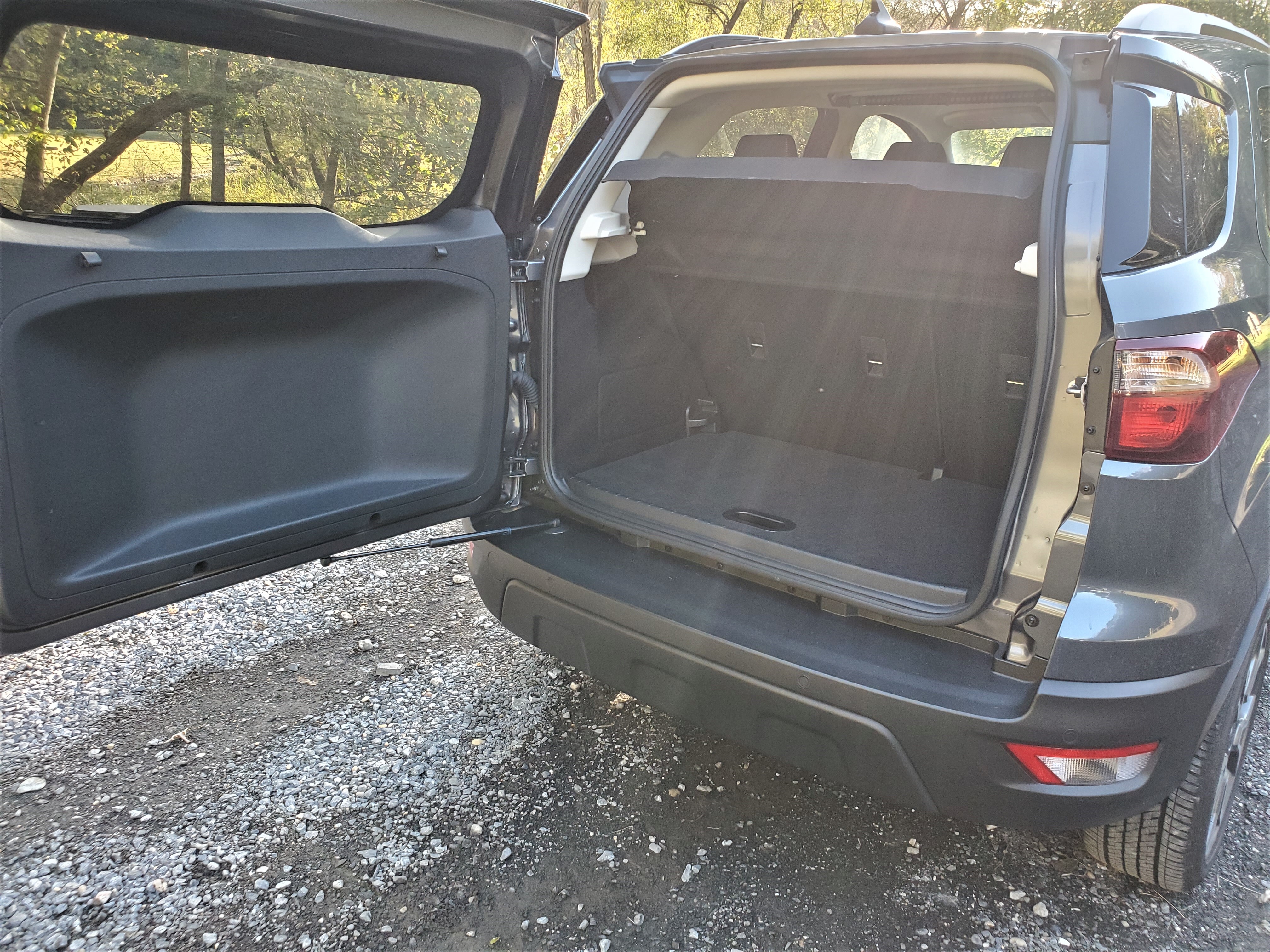
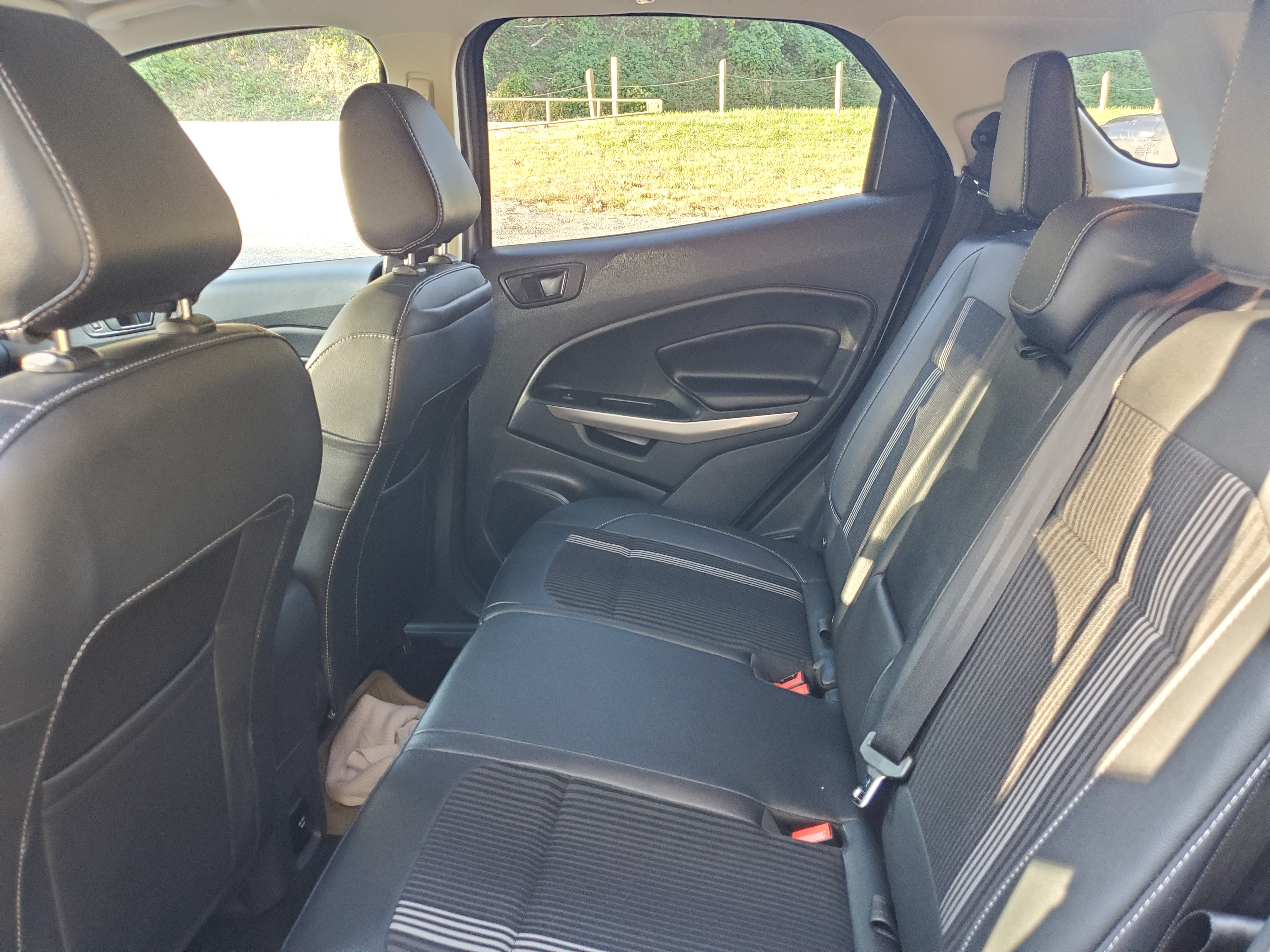
I rented this car with Turo, a crowdsourced car rental platform.